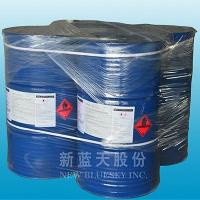-
Categories
-
Pharmaceutical Intermediates
-
Active Pharmaceutical Ingredients
-
Food Additives
- Industrial Coatings
- Agrochemicals
- Dyes and Pigments
- Surfactant
- Flavors and Fragrances
- Chemical Reagents
- Catalyst and Auxiliary
- Natural Products
- Inorganic Chemistry
-
Organic Chemistry
-
Biochemical Engineering
- Analytical Chemistry
-
Cosmetic Ingredient
- Water Treatment Chemical
-
Pharmaceutical Intermediates
Promotion
ECHEMI Mall
Wholesale
Weekly Price
Exhibition
News
-
Trade Service
The chemical industry plays a vital role in various sectors, including manufacturing, agriculture, healthcare, and construction.
One of the essential components of this industry is glass, which is used in various applications such as windows, bottles, and laboratory equipment.
Glass production involves a series of processes, and one of the critical steps is the instruction of glass.
This process involves the use of chemicals and oxides to give glass its desired color, strength, and durability.
The instruction of glass involves the addition of chemicals and oxides to the molten glass during the manufacturing process.
The type of chemicals and oxides used depends on the intended use of the glass.
For example, if the glass is intended for bottles, it may be made with a high concentration of boron oxide, which gives it increased strength and durability.
On the other hand, if the glass is intended for windows, it may be made with a higher concentration of silicon dioxide, which makes it more resistant to temperature changes and improves its transparency.
The process of instruction begins with the production of molten glass, which is heated to extremely high temperatures.
This molten glass is then passed through a series of rollers, which apply pressure to it.
The pressure causes the molten glass to stretch and flatten, creating a thinner and wider sheet of glass.
The glass is then cooled and further processed to remove any imperfections.
The next step in the instruction process involves the addition of chemicals and oxides to the molten glass.
The type of chemicals and oxides used depends on the desired properties of the final product.
For example, the addition of boron oxide improves the strength and durability of the glass, while the addition of manganese dioxide improves its resistance to heat.
The amount of chemicals and oxides added to the glass is carefully controlled to ensure that the final product meets the required specifications.
Once the chemicals and oxides have been added to the molten glass, it is allowed to cool and solidify.
The solidified glass is then cut into the desired shapes and sizes.
The final product is then inspected to ensure that it meets the required standards for quality and purity.
The use of chemicals and oxides in the instruction of glass has several advantages.
It improves the strength and durability of the glass, making it more resistant to breakage and wear.
It also improves the transparency and clarity of the glass, making it more suitable for use in windows and other transparent applications.
Additionally, the use of chemicals and oxides can reduce the amount of energy required to manufacture the glass, as it makes the glass less prone to thermal stress.
In conclusion, the instruction of glass is a critical process in the production of glass for various applications.
The use of chemicals and oxides improves the strength, durability, transparency, and clarity of the glass, making it more suitable for various applications.
The chemical industry plays a vital role in the production of glass, and it will continue to be an essential component of this industry in the years to come.







